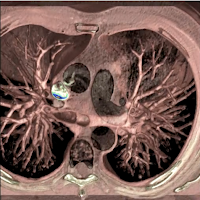Advanced imaging techniques such as CT, MRI, PET and magnetoencephalography are essential tools for microsurgery that substantially enhance accuracy and result in better outcomes. Minimally invasive techniques such as endoscopic endonasal surgery and ventricular endoscopy reduce collateral damage and speed recovery. More recently, surgeons have begun to use functional MRI intraoperative as well.
Neurosurgical treatments for stroke entail removing blood clots caused by accidents or hypertension to restore blood flow to a blocked artery in the brain. When a patient can be treated immediately following the onset of symptoms, a neurosurgeon will generally administer tissue plasminogen activator (tPA), a medication that dissolves blood clots non-surgically. For patients who are not eligible for treatment with tPA, neurosurgeons may opt to remove or break up the clot via image-guided catheterization processes.
Preventative neurosurgical procedures for strokes include carotid endarterectomy, in which fatty plaques are removed from the carotid arteries, enabling blood flow to the brain. In carotid stenting, tiny wire mesh tubes are placed in the carotid artery to hold the artery open and ensure adequate blood supply.
Arteriovenous malformations (AVM), potentially life-threatening connections between arteries and veins in the brain, may be treated using procedures that block blood flow through embolization or radiosurgery. Depending on their location, brain tumors may be surgically removed or treated via radiosurgery as well.
Ventriculo-peritoneal and ventriculo-atrial shunting are surgical treatments for hydrocephaly, a condition in which cerebrospinal fluid fails to drain properly from the brain, putting pressure on delicate structures.
Seizures that cannot be controlled with medication may be treated through surgical removal of the locus of the abnormal electrical activity within the brain. A recently developed procedure entails insertion of a vagal nerve stimulator in the patient’s neck to control seizures.
Other conditions treated by neurosurgeons include spinal tumors, spinal disc herniation, traumatic injury of peripheral nerves and spinal stenosis.


















































